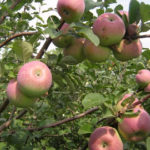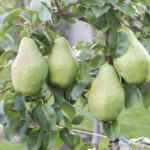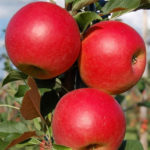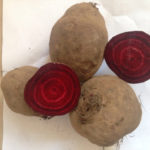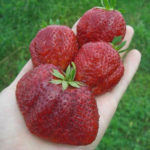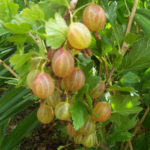Lemon variety Kievsky large-fruited
There are varieties of lemons, known in all countries, a kind of "cosmopolitan". As a rule, these are old, generally recognized citruses, included in reputable reference books. But there are others that can be called "regional". They have gained popularity only in certain countries or regions, and are almost unknown outside of them. Among them is the Kiev large-fruited, our current hero.
History of creation
This lemon, according to one version, was created in 1994 in Kiev. It was a difficult time, post-perestroika, when everything old was breaking down, and the new was just emerging in contradictory rushes. A popular Kiev breeder, and at the same time a businessman, Anatoly Patiy, in his book "Lemon" informed a wide circle of readers about the creation of a new variety, which the author himself called "Kiev large-fruited".
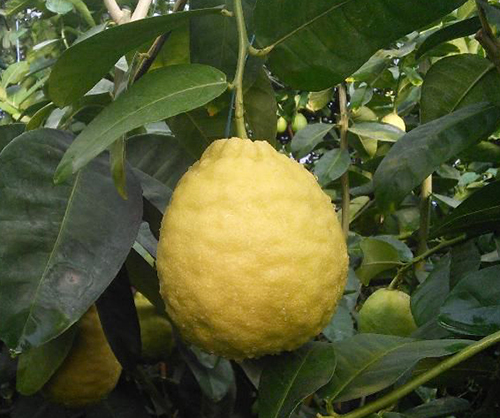
Patius wrote that he had received a new variety through careful selection of seedlings of the famous variety "Genoa". The author added that the plant he received is excellently adapted to life in indoor conditions, compact and productive. In general, he praised his brainchild in every possible way (do not forget that Anatoly Vasilyevich was also a businessman who actively promoted his products of exotic fruits grown in his own greenhouse on the market).
In particular, the description contained the phrase that the plants of the new variety form small fruits weighing about 200 grams. This fact soon confused many experts and amateurs. After all, the very first trees received from Patiya began to bear fruit up to a kilogram and even more! But the well-known "Genoa" has never had such large lemons in its crown! Moreover, its fruits, on the contrary, are small in size. Where did such giants come from from his seedlings, albeit carefully selected?
Doubts intensified when citrus growers saw the leaves of Kiev. They also bore little resemblance to Genoa leaves, but surprisingly resembled the leaf blade of another widespread variety, "Panderoses". And in Panderoza, as it was known, the fruits are also gigantism.
Therefore, a new version emerged: Kievsky large-fruited is not a derivative of Genoa, but one of the clones of Panderoza, especially since a lot of them are already known. This is how these mutually exclusive versions still live. One is from Patiya himself; another, alternative, from his opponents, whom the author himself calls ill-wishers.
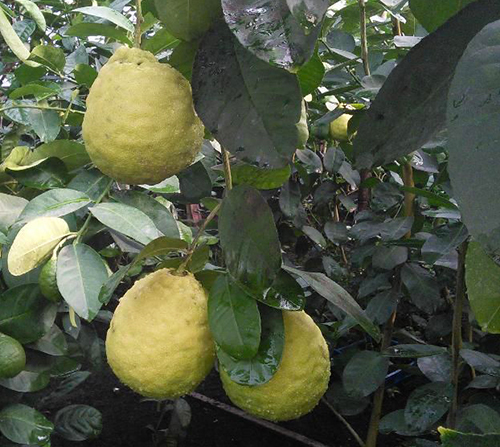
Description of the variety
Features of the crown... The tree is low, compact, with a dense, beautiful crown. The leaves are round, they are so wide that this feature is perhaps the main difference between the variety and other citrus counterparts. They are dense to the touch, rich green, attached to short petioles. The crown branches well, needs minimal formation. The branches are strong, with many thorns.
As in the case of Panderoza, the Kiev large-fruited has a growth problem; instead of increasing the size of the branches, the tree begins to bloom, while losing strength.
Bloom... Lemon blooms profusely, several times a year, with flowers literally covering the entire crown. By the way, this is not observed in Genoa, but it is typical for Panderosa. Flowering begins quickly, sometimes almost in the first year after the rooting of the cuttings, which is very much appreciated by lovers of homemade citrus fruits. The flowers are large, fragrant, located on the branches both singly and in compact inflorescences. Another positive point is the high degree of self-pollination of flowers.
Fruit... It has already been reported that they are large, with an average weight of 600 to 800 grams, but often there are specimens up to a kilogram and even one and a half! Their appearance looks like a shapeless pear. The peel is thick, with a pronounced tuberosity, has a characteristic, not quite lemon scent (characteristic of citrons). There are always many seeds inside the fruit, sometimes there are more than fifty of them per fruit.
Interesting! The fruits of the Kiev lemon can hang on the tree for more than two years! If they are not picked in time, the bright yellow peel turns green again, and the fruit “ripens” further.This cycle can be repeated two to three times, and each time the fruit becomes less tasty.
If we are talking about taste, it is worth saying that many amateurs consider it mediocre, although there are many positive reviews. Apparently, a lot depends on the ripening conditions.
At home, the tree usually grows only a few fruits, although in greenhouses and spacious light winter gardens, the yield increases significantly.
Thus, we got a description reminiscent of the classic Panderosa. There are differences (for example, our hero does not lose leaves so much in winter, he is more shade-tolerant). Even if Patiya's opponents are right, we have to admit that he bred a clone better adapted to indoor or greenhouse conditions than his "American parent." And this, you see, is the most important thing for a true lover of homemade citrus!
